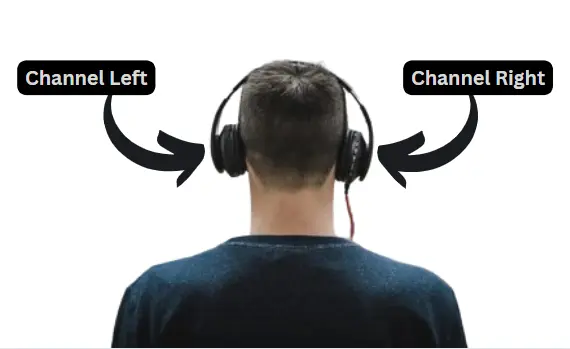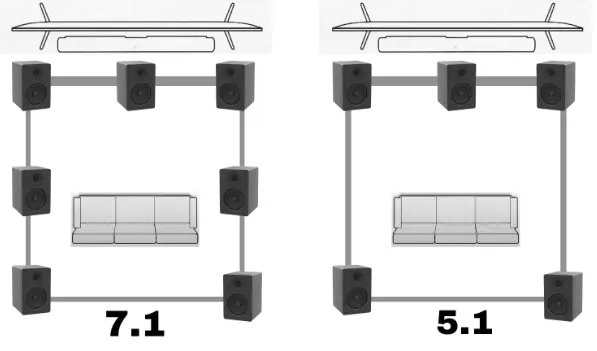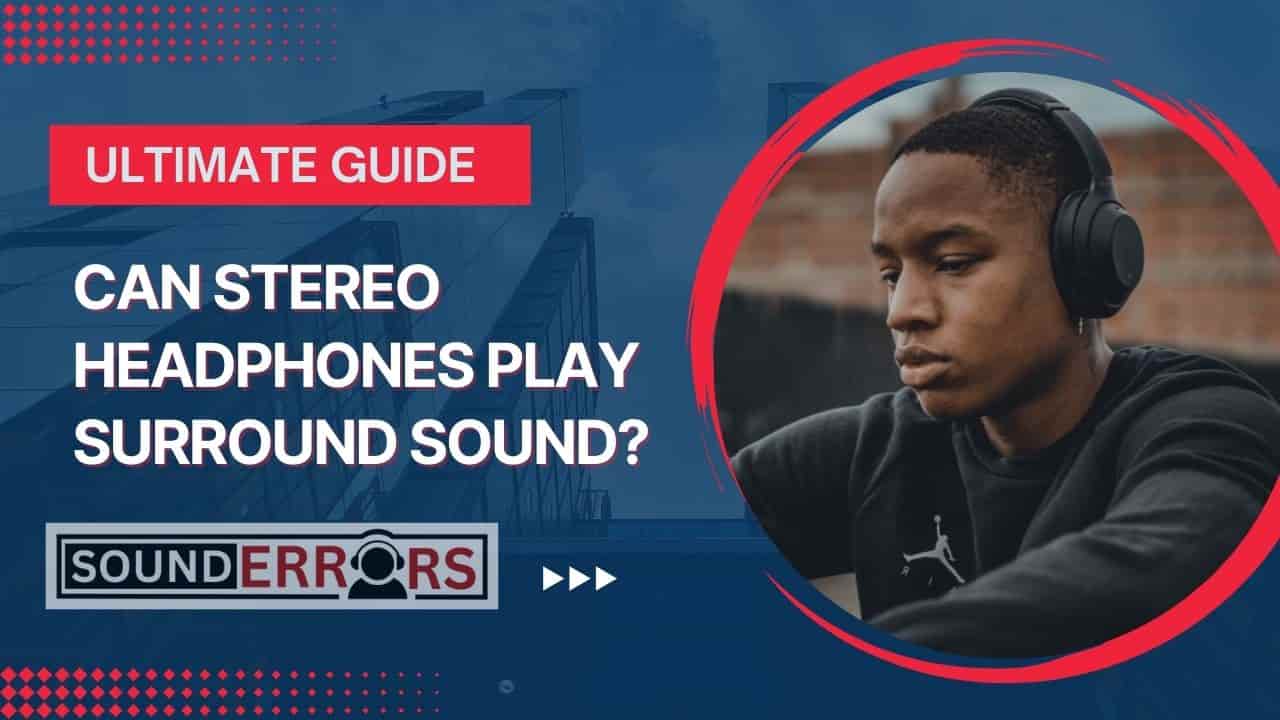This Post may contain affiliate links, when you purchase through links on our site, we may earn an affiliate commission at no extra cost to you. Here’s how it works.
Stereo headphones are designed to play two audio channels (left and right). This is the fundamental nature of stereo sound: the sound is split into two distinct channels, creating a sense of spatial direction and depth.
Table of Contents
ToggleSurround sound, typically characterized by multi-channel audio such as 5.1 or 7.1 setups, aims to immerse listeners by placing audio sources around them (front, back, left, right, and sometimes top or bottom).
How Do Stereo Headphones Work?
Stereo headphones are designed with two drivers—one for each ear. These drivers receive two channels of audio: one for the left ear (left channel) and one for the right ear (right channel).

The listener perceives the sound as coming from either the left or the right or as a blend of both.
Surround Sound Basics
Surround sound, in its most common form (e.g., 5.1 or 7.1 systems), involves multiple speakers placed strategically around the listener. Each speaker plays a different channel-front left, front right, center, rear left, rear right, and subwoofer (for bass).

Surround sound systems allow the listener to perceive sounds coming from all directions, enhancing audio realism, especially in home theater systems, gaming, and immersive movie experiences.
Can Stereo Headphones Simulate Surround Sound?
While stereo headphones are known for two audio channels, technology has made it possible to simulate surround sound through virtual surround sound and spatial audio techniques.
These technologies manipulate audio signals to create the illusion of a 3D soundstage, even with only two speakers. There are several methods through which stereo headphones can simulate surround sound:
1. Virtual Surround Sound
Virtual surround sound is a technology designed to simulate the effects of surround sound systems using only two speakers, like those found in stereo headphones. Here are some key virtual surround sound technologies:
- Dolby Headphone: It uses advanced algorithms to create the illusion of sound coming from multiple directions. Dolby headphones work by modifying the audio signals to simulate the effect of sound being played through various speakers placed around the listener.
- DTS Headphone:X: Similar to Dolby Headphone, DTS Headphone:X offers a virtual surround sound experience by creating the illusion of 11.1 surround sound channels. It uses binaural audio processing to manipulate sound positioning.
- Windows Sonic: A spatial sound technology from Microsoft, built into Windows 10 and later versions and can be enabled in the system’s audio settings. Windows Sonic provides virtual surround sound for headphones.
- Sony 360 Reality Audio: Sony’s spatial audio solution aims to provide a more immersive experience by placing sounds in a 360-degree field around the listener. Using specialized encoding, it adjusts the sound based on the listener’s head movements.
2. Binaural Audio
Binaural audio refers to a recording method designed to mimic the way humans hear sounds in the real world. It uses two microphones placed in a manner similar to human ears—often inside a dummy head—capturing sound with depth, directionality, and spatiality.
When played through stereo headphones, binaural recordings provide an incredibly realistic sense of three-dimensional sound. Binaural recordings are often used in virtual reality (VR) and 3D audio applications to provide a fully immersive experience.
While not the same as surround sound, binaural audio provides the illusion of sound coming from all directions.
3. Head-Related Transfer Function (HRTF)
HRTF refers to the way sounds are altered by the shape of the outer ear and head. Virtual surround sound technologies often rely on HRTF data to adjust the positioning of sound in a way that mimics the human auditory experience in three-dimensional space.
By applying HRTF filters, stereo headphones can simulate the directionality of sound, making it appear as though the audio is coming from various positions around the listener—front, back, left, right, above, or below.
Limitations of Surround Sound on Stereo Headphones
While virtual surround sound and spatial audio technologies have come a long way, there are some limitations to the experience when using stereo headphones:
- Lack of True Channel Separation: Stereo headphones have only two audio channels—left and right—so they cannot reproduce the full depth and channel separation.
- Limited Bass Response: In a true surround system, the subwoofer provides deep bass sounds that can be felt as well as heard. While some headphones may have excellent bass response, it’s still not the same as a subwoofer.
- Soundstage Compression: The experience of sound coming from real speakers placed around you cannot be perfectly replicated in stereo headphones.
- Head Tracking Limitations: Some surround sound simulations rely on head tracking to adjust the sound field based on head movements. If a headphone system does not support this feature, the sense of directionality can be less convincing.
Applications of Virtual Surround Sound in Stereo Headphones
- Gaming: Virtual surround sound is particularly useful in gaming, where it can provide an advantage by allowing players to hear sounds (footsteps, gunshots, enemy movements) coming from specific directions.
- Movies and TV Shows: Many movie and TV soundtracks are mixed with surround sound in mind. Virtual surround technologies can help recreate the intended experience on headphones.
- Music: Some music genres, particularly those that utilize binaural recording techniques, can benefit from the 3D audio effect provided by virtual surround technologies.
- Virtual Reality (VR): In VR, accurate 3D audio is crucial for creating immersion. Stereo headphones with spatial audio support can help simulate a fully immersive auditory environment.
Conclusion
While stereo headphones cannot deliver true surround sound in the same way a multi-speaker system can. Advanced virtual surround sound and spatial audio technologies have made it possible to simulate the effect of surround sound.
These technologies work by manipulating the audio signals to create the illusion of sound coming from various directions, using psychoacoustic cues, HRTF filters, and head tracking. The future of spatial audio is bright, and headphone technology continues to improve every time.
